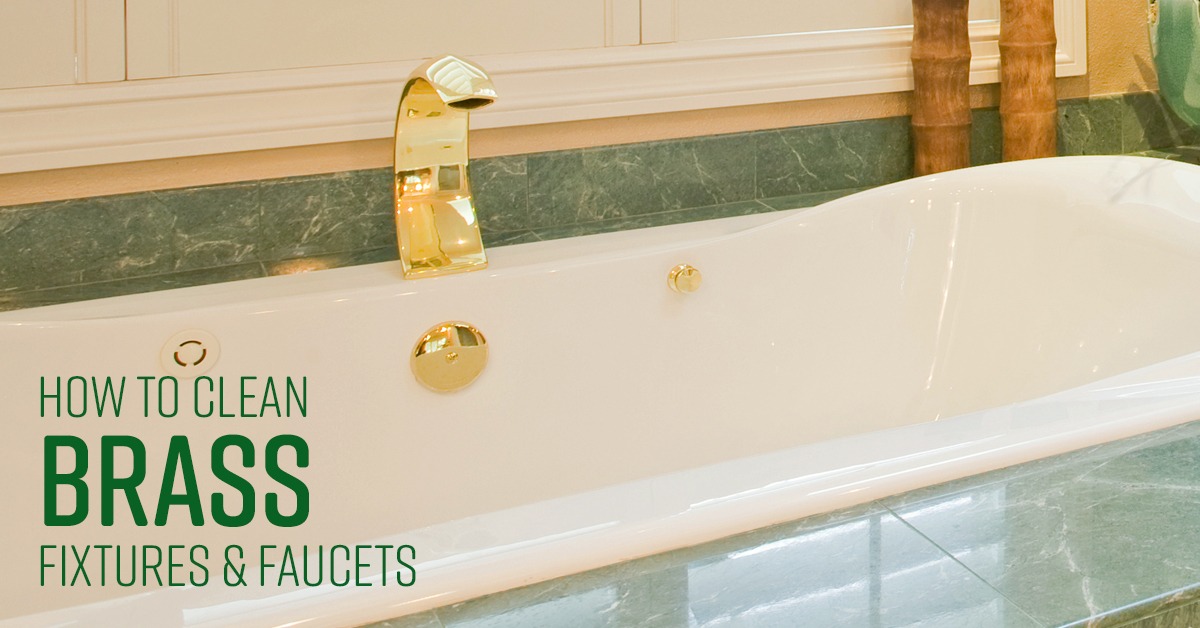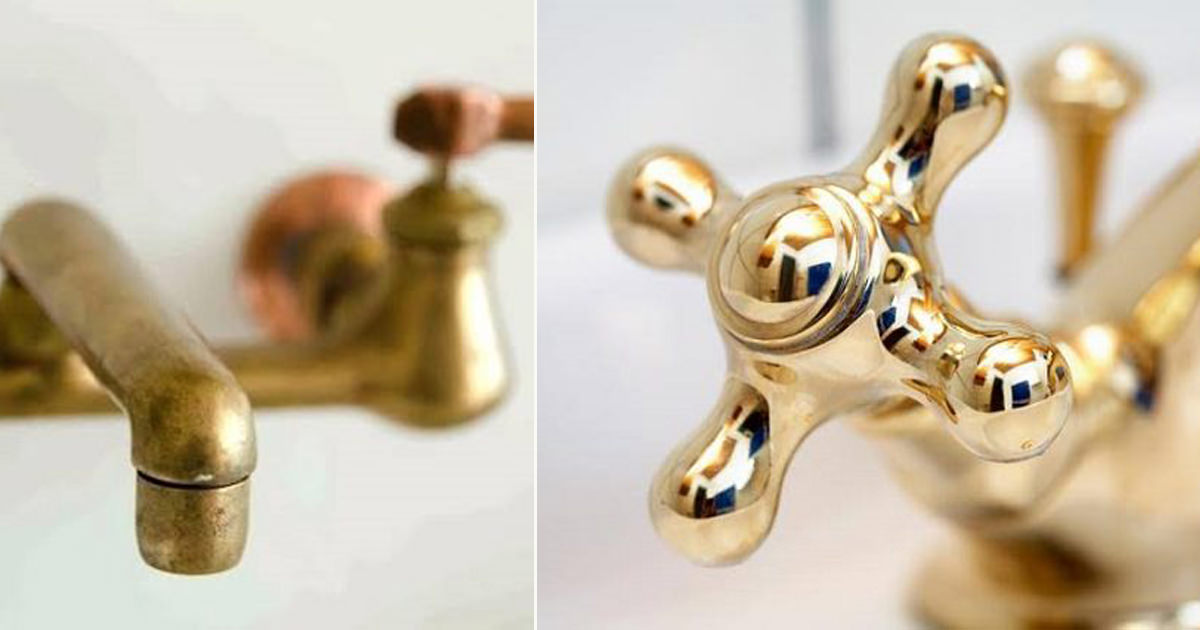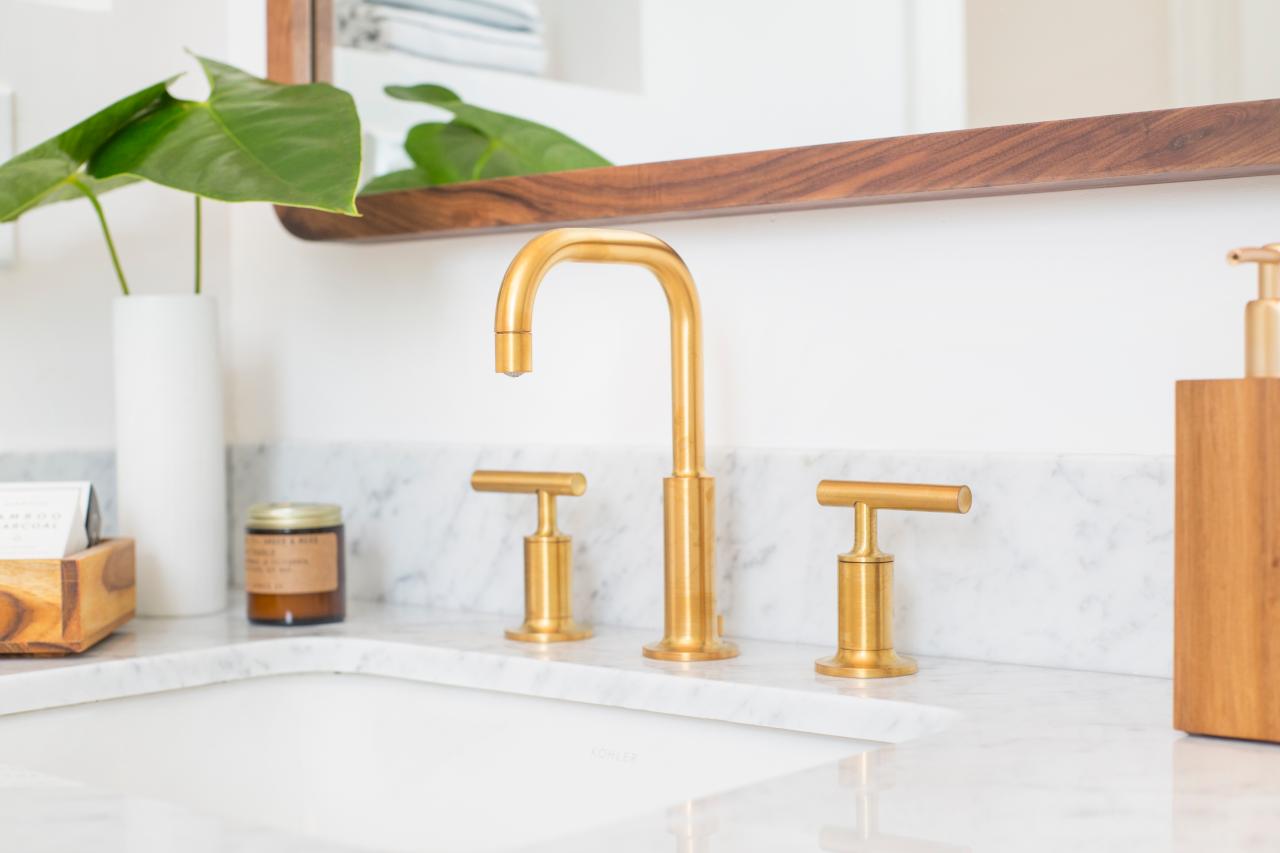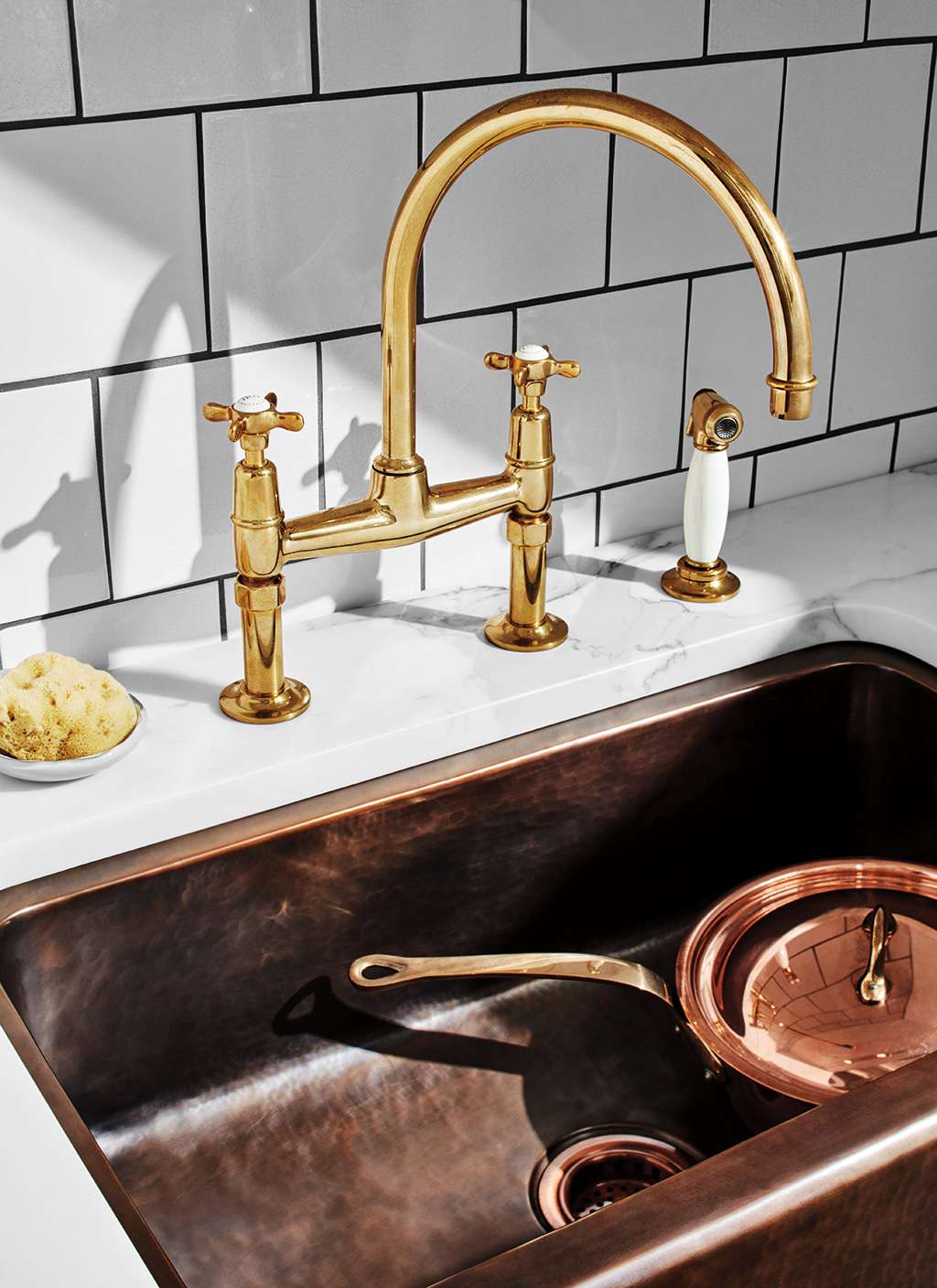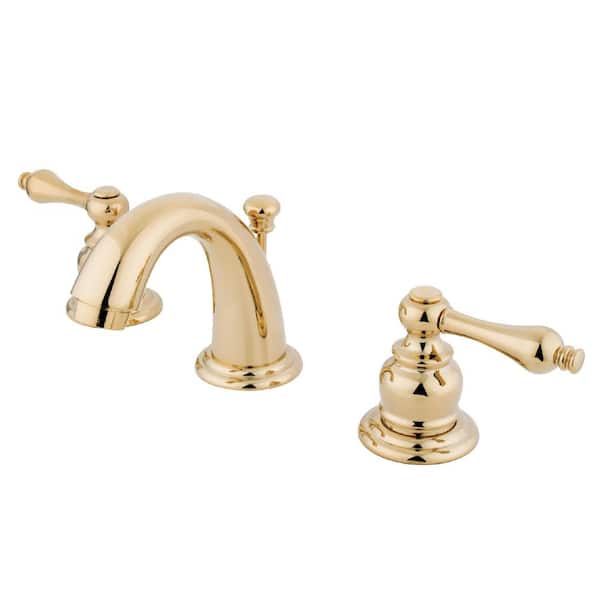Brass Faucet Care: A Brief Introduction
Brass faucets can add a touch of elegance and sophistication to any bathroom. However, to maintain their beauty and functionality, proper care and maintenance are essential. Brass is a durable material, but it can tarnish and lose its shine over time if not cared for properly. Let’s discuss some simple yet effective ways to care for your brass bathroom faucets and keep them looking their best for years to come.
- Understanding Brass: Before diving into brass faucet care, it’s important to understand the material itself. Brass is an alloy made primarily of copper and zinc, with small amounts of other metals added for strength and color. It’s prized for its durability and attractive golden hue, making it a popular choice for fixtures like faucets and handles.
- Preventative Maintenance: One of the best ways to care for brass faucets is through regular preventative maintenance. This includes wiping down the faucets after each use to remove water spots and soap residue. Avoid using abrasive cleaners or scrub brushes, as these can scratch the surface of the brass and cause damage.
- Tarnish Removal: Despite your best efforts, brass faucets may still develop tarnish over time. Tarnish is a natural reaction that occurs when brass is exposed to air and moisture. To remove tarnish and restore the shine to your faucets, there are several methods you can try, including using commercial brass cleaners, homemade vinegar solutions, or natural remedies like lemon juice and baking soda.
- Sealing the Surface: Another way to protect your brass faucets from tarnish and corrosion is by sealing the surface with a protective coating. There are various brass lacquers and waxes available on the market specifically designed for this purpose. Apply a thin layer of sealant to the cleaned and dried faucets according to the manufacturer’s instructions to create a barrier against moisture and oxidation.
- Regular Inspections: Finally, make it a habit to regularly inspect your brass faucets for any signs of damage or wear. Check for leaks, loose parts, or corrosion, and address any issues promptly to prevent further damage. By taking proactive measures to care for your brass faucets, you can ensure they remain a beautiful and functional addition to your bathroom for years to come.
Essential Tools and Supplies for Brass Faucet Cleaning
Cleaning brass bathroom faucets doesn’t have to be a daunting task, especially when you have the right tools and supplies on hand. With the proper equipment, you can effectively remove tarnish, polish the surface, and restore the shine to your brass fixtures with ease. Below are some essential tools and supplies you’ll need to clean your brass bathroom faucets like a pro.
Soft Cloths: Soft, lint-free cloths are essential for cleaning brass faucets without scratching the surface. Microfiber or cotton cloths work best for gently wiping away dirt, grime, and tarnish. Avoid using rough or abrasive materials like steel wool or scrub brushes, as these can damage the brass and leave behind scratches.
Brass Cleaner: A good quality brass cleaner is key to effectively removing tarnish and restoring the shine to your faucets. Look for a cleaner specifically formulated for brass surfaces and follow the manufacturer’s instructions carefully. Some cleaners come in spray bottles for easy application, while others may require dilution with water.
Vinegar or Lemon Juice: For a more natural approach to brass cleaning, you can use vinegar or lemon juice to remove tarnish and restore the shine to your faucets. Simply soak a soft cloth in vinegar or lemon juice and gently rub it onto the brass surface. The acidic properties of these ingredients help dissolve tarnish and restore the brass to its original luster.
Baking Soda: Baking soda is another household staple that can be used to clean brass faucets effectively. Make a paste by mixing baking soda with water, then apply it to the brass surface with a soft cloth. Gently scrub the surface in circular motions to remove tarnish and polish the brass. Rinse thoroughly with water and dry with a clean cloth.
Protective Sealant: Once you’ve cleaned and polished your brass faucets, consider applying a protective sealant to help prevent tarnish and corrosion in the future. Brass lacquer or wax can provide a barrier against moisture and oxidation, keeping your faucets looking shiny and new for longer.
Rubber Gloves: While not strictly necessary, wearing rubber gloves can help protect your hands from harsh cleaning chemicals and prevent skin irritation. Plus, they can provide a better grip when cleaning hard-to-reach areas of your brass faucets.
Soft Bristled Brush: In addition to soft cloths, having a soft-bristled brush on hand can be useful for cleaning hard-to-reach areas of your brass faucets, such as around crevices or intricate designs. Opt for a brush with gentle bristles to avoid scratching the brass surface while effectively removing dirt and grime.
Mild Dish Soap: Sometimes, all your brass faucet needs is a gentle cleaning with mild dish soap and warm water. This is especially effective for removing light dirt and maintaining the shine of your fixtures between deeper cleanings. Simply mix a small amount of dish soap with warm water, dip a soft cloth into the solution, and gently wipe down the brass surface. Rinse thoroughly with clean water and dry with a soft cloth.
Old Toothbrush: An old toothbrush can also come in handy for cleaning brass faucets, particularly in tight spaces or around intricate details. Use the toothbrush along with your chosen cleaning solution to gently scrub away dirt and grime from hard-to-reach areas, ensuring thorough cleaning and restoration of your brass fixtures.
Rubbing Alcohol: For stubborn stains or residue on your brass faucets, rubbing alcohol can be an effective solution. Simply dampen a soft cloth with rubbing alcohol and gently rub the affected areas to dissolve and remove the stains. Be sure to rinse the brass surface thoroughly with water afterward and dry it completely to prevent any alcohol residue from affecting the finish.
Lint-Free Buffing Cloth: Once you’ve cleaned and polished your brass faucets, use a lint-free buffing cloth to give them a final shine. Buffing cloths made of microfiber or soft cotton are ideal for removing any remaining residue and restoring the luster of your brass fixtures to perfection.
Brass Polish: If your brass faucets require extra shine and protection, consider using a specialized brass polish. Brass polish is formulated to gently clean, polish, and protect brass surfaces, leaving them with a long-lasting shine and protection against tarnish and corrosion. Follow the manufacturer’s instructions carefully for best results, and always test the polish on a small, inconspicuous area first to ensure compatibility with your brass fixtures.
Step-by-Step Guide: Cleaning Your Brass Bathroom Faucets
Cleaning your brass bathroom faucets doesn’t have to be a daunting task. With the right tools, supplies, and techniques, you can effectively remove tarnish, polish the surface, and restore the shine to your brass fixtures with ease. In this step-by-step guide, we’ll walk you through the process of cleaning your brass bathroom faucets like a pro.
Gather Your Supplies: Start by gathering all the necessary supplies for cleaning your brass faucets. This includes soft cloths, brass cleaner or natural cleaning solutions (such as vinegar, lemon juice, or baking soda), a soft-bristled brush, mild dish soap, rubbing alcohol, a lint-free buffing cloth, and any other tools you may need for the job.
Prepare the Cleaning Solution: If you’re using a commercial brass cleaner, follow the manufacturer’s instructions for dilution or application. If you prefer a natural cleaning solution, you can mix vinegar or lemon juice with water, or create a paste with baking soda and water. Alternatively, you can simply use mild dish soap and warm water for a gentle cleaning solution.
Apply the Cleaning Solution: Dip a soft cloth into the cleaning solution and gently apply it to the brass surface of your faucets. Be sure to cover the entire surface, including any crevices or intricate details where dirt and grime may accumulate. If necessary, use a soft-bristled brush or an old toothbrush to scrub away stubborn stains or residue.
Rinse Thoroughly: Once you’ve cleaned the brass surface, rinse it thoroughly with clean water to remove any remaining cleaning solution or residue. Use a separate clean cloth dampened with water to wipe away the cleaning solution and ensure the brass surface is completely clean and free of residue.
Dry Completely: After rinsing, use a dry, soft cloth to thoroughly dry the brass surface. Pay special attention to drying any crevices or hard-to-reach areas where water may linger and cause spotting or tarnish. It’s important to dry the brass completely to prevent water spots and ensure a beautiful, streak-free shine.
Apply Brass Polish (Optional): If you want to give your brass faucets an extra shine and protection, you can apply a small amount of brass polish to the cleaned and dried surface. Follow the manufacturer’s instructions for application, using a soft cloth to apply the polish in circular motions. Buff the surface gently with a lint-free buffing cloth to achieve a brilliant shine.
Inspect and Touch Up: Finally, take a moment to inspect your brass faucets for any missed spots or areas that may need touch-up cleaning or polishing. Pay attention to detail and ensure the entire surface is clean, shiny, and free of tarnish or residue. Touch up any areas as needed to achieve the desired result.
Pro Tips for Maintaining the Shine and Luster of Brass Fixtures
Maintaining the shine and luster of brass fixtures is essential to preserving their beauty and prolonging their lifespan. While cleaning your brass bathroom faucets regularly is important, there are additional steps you can take to ensure they remain looking their best for years to come. Here are some pro tips for maintaining the shine and luster of your brass fixtures.
Dry After Each Use: One of the simplest yet most effective ways to maintain the shine of your brass faucets is to dry them thoroughly after each use. Water spots and moisture can cause tarnish and corrosion over time, so it’s important to wipe down the faucets with a soft cloth after every use. Pay special attention to drying any crevices or hard-to-reach areas where water may accumulate.
Avoid Abrasive Cleaners: While it may be tempting to use abrasive cleaners or scrub brushes to tackle stubborn stains, these can damage the surface of your brass fixtures and dull their shine. Instead, opt for gentle cleaning solutions and soft cloths to avoid scratching the brass. If necessary, use a soft-bristled brush for gentle scrubbing, but be sure to avoid excessive pressure to prevent damage.
Regular Maintenance: Incorporate regular maintenance into your cleaning routine to prevent tarnish and corrosion from developing. This includes inspecting your brass fixtures regularly for any signs of damage or wear, such as leaks, loose parts, or discoloration. Address any issues promptly to prevent further damage and maintain the overall integrity of your brass fixtures.
Apply Protective Sealant: Consider applying a protective sealant to your brass fixtures to provide an extra layer of protection against tarnish and corrosion. Brass lacquer or wax can help seal the surface and prevent moisture and oxidation from affecting the brass. Follow the manufacturer’s instructions carefully for application, and reapply the sealant as needed to maintain its effectiveness.
Use Brass-Friendly Products: When cleaning your brass fixtures, choose products that are specifically formulated for brass surfaces. Avoid harsh chemicals or abrasive cleaners that can damage the brass and diminish its shine. Opt for gentle cleaning solutions such as vinegar, lemon juice, or mild dish soap, and always test any new products on a small, inconspicuous area first to ensure compatibility.
Protect from Harsh Elements: If your bathroom is prone to high humidity or exposure to harsh elements, take steps to protect your brass fixtures accordingly. Install proper ventilation to reduce moisture levels and prevent corrosion, and consider using protective covers or coatings to shield the brass from environmental damage. By taking proactive measures to protect your brass fixtures, you can prolong their lifespan and maintain their shine for years to come.
Troubleshooting Common Issues and Restoration Techniques for Brass Faucets
Despite your best efforts, brass faucets may encounter common issues such as tarnish, corrosion, or wear over time. Fortunately, there are restoration techniques and solutions available to address these issues and restore your brass fixtures to their former glory. Below are some common problems and troubleshooting techniques for brass faucets.
Tarnish Removal: Tarnish is a natural occurrence that can develop on brass surfaces over time due to exposure to air and moisture. To remove tarnish and restore the shine to your brass faucets, you can try using commercial brass cleaners, homemade vinegar solutions, or natural remedies like lemon juice and baking soda. Apply the chosen solution to the brass surface, then gently scrub with a soft cloth or brush to remove the tarnish. Rinse thoroughly with water and dry completely to prevent further tarnish from developing.
Corrosion Prevention: Corrosion can occur on brass faucets when exposed to harsh chemicals or environmental elements. To prevent corrosion, avoid using abrasive cleaners or harsh chemicals that can damage the brass surface. Install proper ventilation in your bathroom to reduce humidity levels and prevent moisture buildup, which can contribute to corrosion. Additionally, consider applying a protective sealant to the brass surface to create a barrier against moisture and oxidation.
Restoring Shine: If your brass faucets have lost their shine and luster, there are restoration techniques you can try to bring back their brilliance. Start by cleaning the brass surface with a gentle cleaning solution to remove any dirt, grime, or tarnish. Once the surface is clean, apply a small amount of brass polish to a soft cloth and gently buff the brass in circular motions to restore its shine. Buff the surface with a lint-free cloth to remove any excess polish and reveal the renewed luster of your brass fixtures.
Repairing Damage: In some cases, brass faucets may sustain damage such as scratches, dents, or discoloration. Depending on the severity of the damage, you may be able to repair it yourself using specialized brass repair kits or techniques. For minor scratches or discoloration, try using a brass polishing compound or metal restoration kit to buff out the imperfections and restore the appearance of the brass. For more serious damage, consult a professional brass restoration expert for guidance and assistance.
Regular Maintenance: The best way to prevent common issues with brass faucets is through regular maintenance and care. Incorporate a regular cleaning routine into your bathroom cleaning schedule to keep your brass fixtures looking their best. Wipe down the faucets after each use to remove water spots and soap residue, and inspect them regularly for any signs of damage or wear. By taking proactive measures to care for your brass faucets, you can prevent common issues and ensure they remain a beautiful and functional addition to your bathroom for years to come.
How To Keep Brass Taps Looking New
How to Clean Brass
How to Clean Brass
How to Care for Unlacquered Brass Faucets Martha Stewart
How to Clean Hard Water Deposits off a Bronze Faucet
How to Clean Unlacquered Brass Faucet – Hello Lidy
How to Clean Unlacquered Brass Faucet – Hello Lidy
How to Clean Gold Coloured Taps. Gold-colored fixtures are a
English Country 8 in. Widespread 2-Handle Bathroom Faucet in Polished Brass
RUNSKÄR Bath faucet with strainer – brass color
Related Posts:
- Types Of Bathroom Faucet Handles
- Black Bathroom Faucets
- Antique Nickel Bathroom Faucets
- Antique Pewter Bathroom Faucets
- How To Fix A Moen Bathroom Faucet Leak
- Old Fashioned Bathroom Faucet
- Kingston Brass Metropolitan Bathroom Faucet
- Leaking Bathroom Faucet Handle
- Replace Old Bathroom Faucet
- Modern Waterfall Bathroom Faucet

